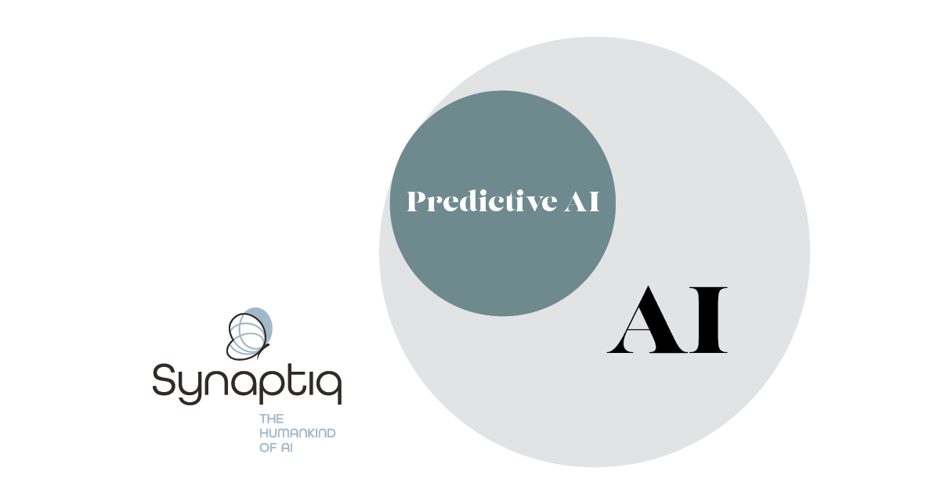Traditional Business Rules vs. Predictive Software Features
I spent nearly half of my career writing requirements and developing and testing software the traditional way....
|
CONSTRUCTION & REAL ESTATE
|
 |
|
Discover how crafting a robust AI data strategy identifies high-value opportunities. Learn how Ryan Companies used AI to enhance efficiency and innovation.
|
| Read the Case Study ⇢ |
|
LEGAL SERVICES
|
 |
|
Discover how a global law firm uses intelligent automation to enhance client services. Learn how AI improves efficiency, document processing, and client satisfaction.
|
| Read the Case Study ⇢ |
|
HEALTHCARE
|
 |
|
A startup in digital health trained a risk model to open up a robust, precise, and scalable processing pipeline so providers could move faster, and patients could move with confidence after spinal surgery.
|
| Read the Case Study ⇢ |
|
LEGAL SERVICES
|
 |
|
Learn how Synaptiq helped a law firm cut down on administrative hours during a document migration project.
|
| Read the Case Study ⇢ |
|
GOVERNMENT/LEGAL SERVICES
|
 |
|
Learn how Synaptiq helped a government law firm build an AI product to streamline client experiences.
|
| Read the Case Study ⇢ |
 |
|
Mushrooms, Goats, and Machine Learning: What do they all have in common? You may never know unless you get started exploring the fundamentals of Machine Learning with Dr. Tim Oates, Synaptiq's Chief Data Scientist. You can read and visualize his new book in Python, tinker with inputs, and practice machine learning techniques for free. |
| Start Chapter 1 Now ⇢ |
By: Lauren Haines 1 Nov 16, 2023 4:00:00 PM

We tend to talk about “using” and “adopting” artificial intelligence like it is a tangible thing. But, actually, AI is a collection of algorithms, data, and computational techniques that enable machines to perform tasks that typically require human intelligence. Think of AI as a field of study, like computer science or mathematics, comprised of an ever-changing array of specialized branches. Generative AI and predictive AI are two such branches.
-1.png?width=940&height=494&name=AI%20vs.%20Generative%20AI%20(alternate%20colors)-1.png)
Generative AI specializes in generating new content, such as text and images. Generative AI applications employ techniques like natural language processing and deep learning to extract patterns from large, complex datasets of human-generated content. They extrapolate upon these learned patterns to create synthetic content.
For example, large language models (LLMs) are a class of generative AI applications that excel in understanding and generating text and code. LLMs like OpenAI's ChatGPT and Google's Bard are trained on sequences of tokens (basic units of text and code) to generate human-like text and code across a wide range of topics.

Predictive AI specializes in making informed guesses about unknown values. Predictive AI applications use techniques such as regression analysis, time series analysis, and other supervised and unsupervised learning algorithms to identify underlying relationships or trends in observed data. They apply this knowledge to make predictions about unobserved data.
For example, recommendation systems used by e-commerce platforms like Amazon and streaming services like Netflix are a class of predictive AI applications fine-tuned to anticipate what products or content will appeal to any given user. They analyze historical data such as previous purchases, browsing history, and preferences to predict with high accuracy which products or content a user is likely to enjoy next, offering personalized recommendations.

Photo by Synaptiq
Synaptiq is an AI and data science consultancy based in Portland, Oregon. We collaborate with our clients to develop human-centered products and solutions. We uphold a strong commitment to ethics and innovation.
Contact us if you have a problem to solve, a process to refine, or a question to ask.
You can learn more about our story through our past projects, blog, or podcast.
I spent nearly half of my career writing requirements and developing and testing software the traditional way....
April 8, 2025
If you don’t take a TOP DOWN and BOTTOM UP approach to design user-facing AI software, you’ll suffer the consequences...
April 8, 2025
I regularly meet executives that are pondering what to do with AI.
Typical responses I hear are:
“Clearly it’s...
April 8, 2025